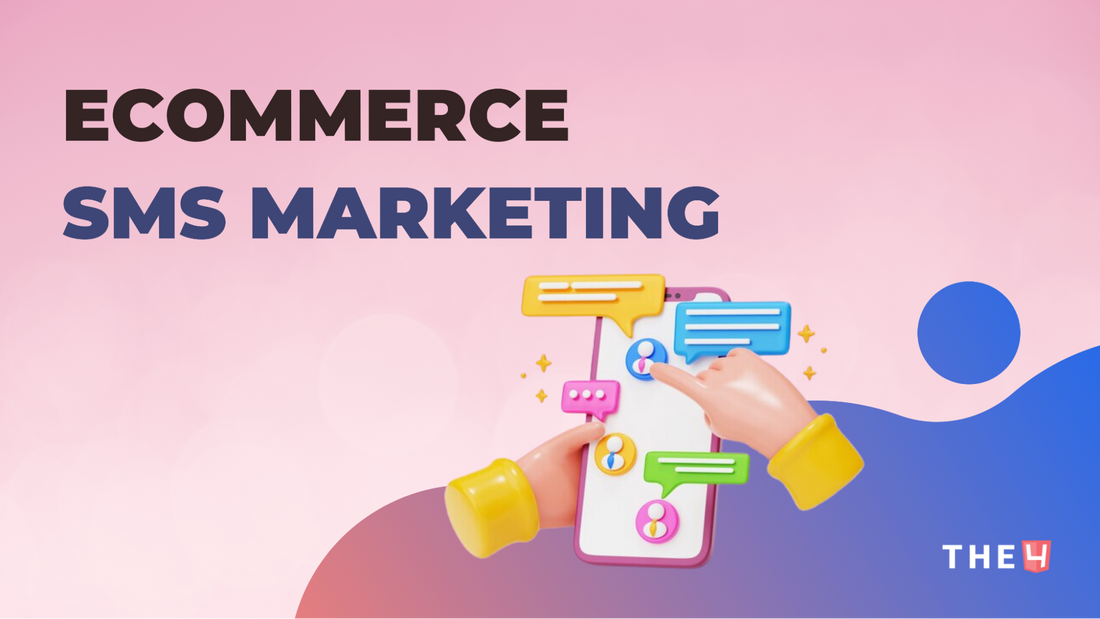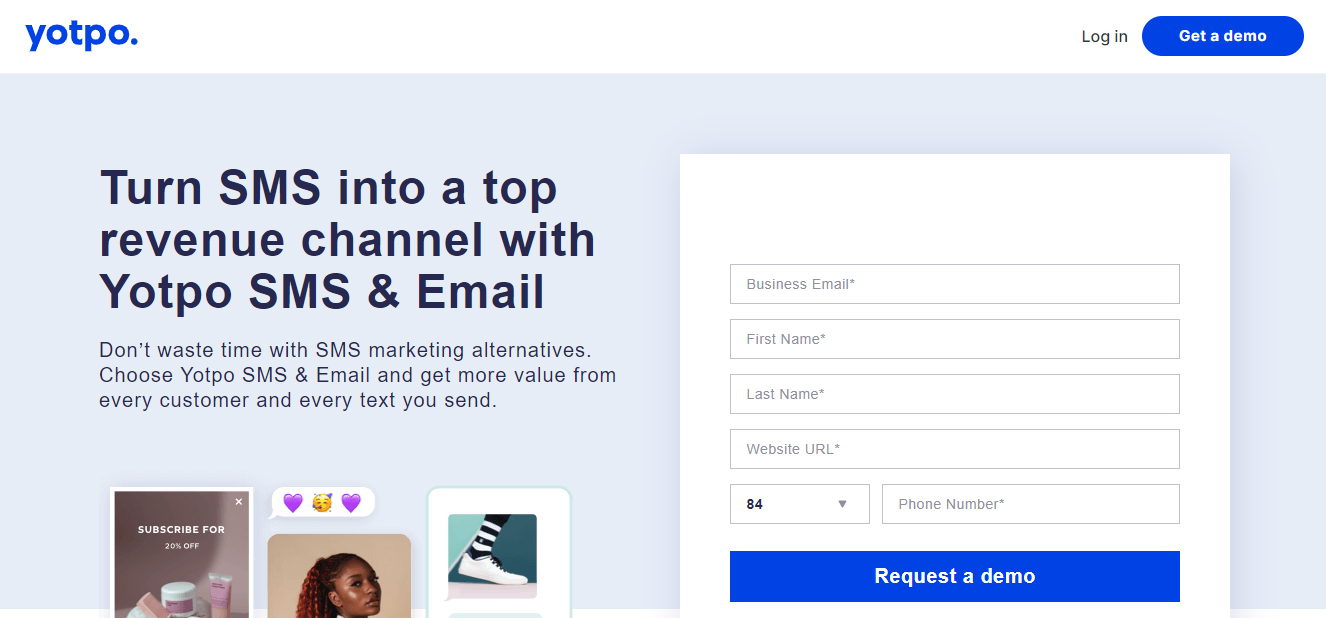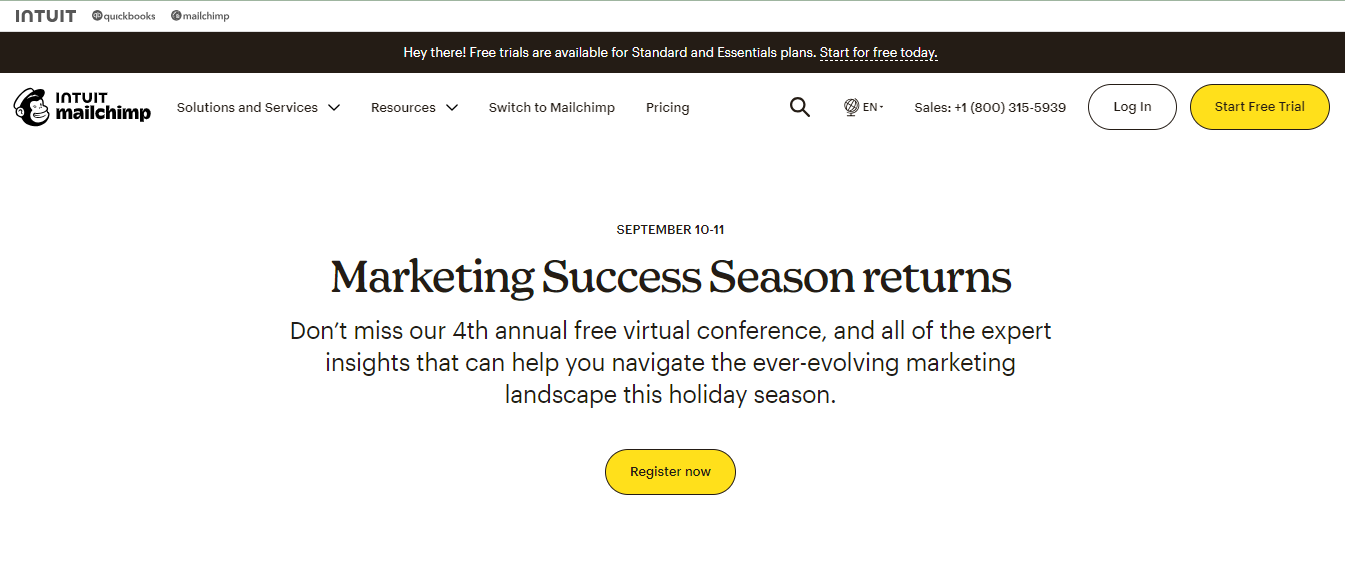Ecommerce SMS Marketing Guide: Tips, Tools & Best Practices

SMS marketing is a powerful tool that lets you reach your audience instantly, with open rates far surpassing any other channel. In this guide, we’ll explore why SMS marketing has become essential for online businesses, offering actionable tips, must-have tools, and best practices to help you harness its full potential. Whether you're looking to boost sales, recover abandoned carts, or build customer loyalty, this guide has you covered. Let’s dive in!
What is eCommerce SMS marketing?
Ecommerce SMS marketing is a strategy where online businesses use text messages to communicate directly with customers. It involves sending promotional offers, order updates, abandoned cart reminders, and personalized messages via SMS to engage with customers and drive sales. With high open rates and fast response times, SMS marketing is a highly effective way for eCommerce brands to create real-time connections, foster customer loyalty, and boost conversions.
Importance & Benefits of SMS Marketing for eCommerce Businesses

SMS marketing has become crucial for eCommerce businesses because it allows businesses to reach customers instantly and directly on their mobile devices. In a world where attention spans are shrinking, SMS cuts through the noise with open rates as high as 98%. This immediate connection creates opportunities for brands to engage customers in real time, whether they’re announcing flash sales, sending order updates, or providing personalized offers. With consumers increasingly shopping on mobile devices, SMS marketing allows businesses to stay top-of-mind and drive conversions with timely, targeted messages.
Benefits of SMS Marketing for eCommerce Businesses
- High Open Rates: SMS messages boast significantly higher open rates compared to email, ensuring that a more significant percentage sees your message of your audience.
- Instant Communication: SMS allows for real-time engagement, perfect for time-sensitive offers like flash sales or limited-time promotions.
- Higher Conversion Rates: With clear calls to action and personalized content, SMS marketing can drive higher conversion rates and boost sales.
- Customer Loyalty & Retention: SMS helps maintain a direct relationship with customers by sending exclusive offers, discounts, and timely reminders, increasing brand loyalty.
- Personalization Opportunities: Through segmentation and customer data, you can deliver highly relevant and personalized messages that cater to individual preferences, improving the shopping experience.
- Abandoned Cart Recovery: SMS is an effective tool for recovering abandoned carts. It sends timely reminders that encourage customers to complete their purchases.
- Cost-Effective: SMS marketing provides a low-cost way to communicate with a large audience, especially compared to traditional advertising methods.
These benefits make SMS marketing a powerful addition to any eCommerce business’s strategy, helping them engage with customers more effectively and achieve more tremendous success.
Guide to starting eCommerce SMS marketing

Step 1: Choose the Right SMS Marketing Platform
1.1. Research Platforms: Your SMS marketing platform should seamlessly integrate with your eCommerce system (e.g., Shopify, WooCommerce, Magento). Look for features like customer segmentation, A/B testing, drip campaigns, and real-time analytics. Some platforms offer advanced personalization and even allow integration with email marketing or social media platforms.
- Klaviyo: Known for its integration with Shopify and focus on personalization.
- Postscript: Specializes in SMS for eCommerce and integrates well with Shopify, offering automation and segmentation.
- Omnisend is a multi-channel marketing platform that provides SMS, email, and push notifications, great for omnichannel strategies.
1.2. Cost Considerations: Compare pricing structures based on the number of contacts and the volume of messages you plan to send. Many platforms offer tiered pricing, so select one that fits your business's scale.
Step 2: Build Your SMS Subscriber List
2.1. Implement Opt-In Forms: Ensure you collect explicit consent to send SMS messages, as non-compliance can lead to heavy fines. Add opt-in opportunities at various touchpoints:
- Checkout Page: Include an SMS opt-in checkbox at checkout.
- Pop-Ups: Use engaging website pop-ups offering a discount code or special promotion for opting in.
- Email Campaigns: Encourage existing customers to subscribe to SMS updates through email invitations.
2.2. Incentivize Subscriptions: People are more likely to opt into your SMS list if they receive something in return. Offer a 10-15% discount on their first order, a gift, or early access to sales for signing up.
2.3. Leverage Social Media: Promote SMS sign-ups on your social media channels by offering exclusive, text-only deals.
Step 3: Segment Your Audience
Use Customer Data: Segmentation allows you to send tailored messages to specific customer groups. Some common segmentation categories include:
- Purchase History: Send relevant product recommendations or reminders based on past purchases.
- Behavioral Triggers: Use triggers like abandoned carts, browsing history, or loyalty points to send automated, personalized messages.
- Demographics: Segment based on location, gender, or age to tailor promotions to different customer groups.
- Engagement Levels: Divide your customers into active, occasional, and inactive categories to send targeted campaigns.
Step 4: Craft Compelling SMS Messages
- Concise Messaging: You have only 160 characters to make your point. Focus on key details like the offer, expiration, and a strong call to action (CTA). For example: “Exclusive Deal! Get 20% off your next purchase with code SAVE20. Hurry, the offer ends in 48 hours! Shop now!”
- Timing Matters: Schedule messages to align with when your audience is most active. Research shows that most SMS messages are read within 3 minutes, so they are sent during peak engagement times, such as lunch breaks or early evenings. Avoid sending too early or late to avoid disturbing your customers.
- Personalization Tactics: Go beyond using just the customer’s name. Referencing past purchases or relevant products increases engagement. Example: “Hey [Name], your favorite [product] is back in stock! Shop now for 10% off.”
- Use Short Links: Instead of including long URLs, use link shorteners (e.g., Bitly) to keep your message neat and direct customers to the right landing page.
Step 5: Set Up Automated Workflows
- Abandoned Cart Recovery: Use SMS to remind customers of items left in their carts with a direct link to complete the purchase. Many platforms allow you to set up automatic reminders 1-2 hours after cart abandonment and follow up with another reminder 24 hours later.
- Order and Shipping Updates: Enhance the customer experience by sending timely order confirmations, shipping updates, and delivery notifications via SMS. This keeps customers informed and reduces their anxiety about their purchases.
- Welcome Messages: Send a welcome message as soon as a customer opts into your SMS list. Thank them for subscribing and provide an incentive (e.g., a discount code) to encourage their first purchase.
- Birthday & Anniversary Offers: Use customer data to automate birthday or loyalty anniversary messages with personalized offers.
Step 6: Monitor Compliance & Privacy
- Legal Regulations: Understand the rules and regulations surrounding SMS marketing. For example, the TCPA (in the U.S.) mandates that businesses obtain express consent before sending SMS marketing messages and provide an easy opt-out option (e.g., texting “STOP” to unsubscribe).
- Respect Your Audience's Privacy: Never share or sell customer phone numbers. Ensure your privacy policy clearly states how their data will be used.
- Frequency Control: Don’t over-message. Stick to a maximum of 4-6 monthly messages unless you have a special event or promotion. Over-messaging can lead to higher opt-out rates and customer dissatisfaction.
Step 7: Measure & Optimize Campaign Performance
7.1. Track KPIs: Keep an eye on essential metrics such as:
- Delivery Rates: Ensure your messages are reaching the intended recipients.
- Open Rates: Typically very high in SMS but still worth monitoring.
- Click-Through Rates (CTR): Measure how many recipients clicked on your link.
- Conversion Rates: Track how many users completed a purchase after receiving your SMS.
- Opt-Out Rates: Keep opt-out rates as low as possible; a sudden spike can indicate that your frequency is too high or your messages aren't relevant.
7.2. A/B Testing: Experiment with different messaging approaches—vary the content, time of day, or type of offer to find what resonates best with your audience. Split testing will be used to determine the most effective copy and CTAs.
7.3. Adjust Your Strategy: Based on the data, refine your messaging, timing, or segmentation. If a particular campaign performs exceptionally well, replicate it or expand it.
Following these detailed steps, you can create a well-rounded and effective SMS marketing strategy that enhances your eCommerce business, builds customer loyalty, and drives consistent growth.
Best SMS Marketing platforms & tools
1. Klaviyo

Klaviyo is a multi-channel marketing platform specializing in email and SMS marketing. It is designed to help eCommerce businesses engage with customers on a deeper level. It integrates seamlessly with popular platforms like Shopify, WooCommerce, and BigCommerce. With powerful automation, segmentation, and real-time analytics, Klaviyo allows businesses to personalize their messaging and optimize customer journeys for maximum engagement and sales.
- Key Features:
- Seamless integration with Shopify, WooCommerce, and BigCommerce.
- Robust segmentation and automation capabilities for personalized SMS.
- A multi-channel approach, combining SMS, email, and social ads in one platform.
- Analytics dashboard for tracking open rates, clicks, and revenue attribution.
- Pros:
- Excellent integration with eCommerce platforms for holistic marketing strategies.
- Robust automation workflows, especially for abandoned cart recovery and post-purchase follow-ups.
- Unified customer profiles across channels, allowing detailed segmentation.
- Cons:
- Pricing can be high for businesses with large contact lists.
- The learning curve is due to the range of features, especially for smaller businesses.
2. Postscript

Postscript is an SMS marketing platform explicitly designed for Shopify users, making it a top choice for eCommerce businesses seeking tailored automation. It offers advanced customer segmentation and supports MMS for rich media messaging. Real-time behavioral triggers enable personalized messaging based on customer activity, such as abandoned carts and product launches, to drive conversions and increase engagement.
- Key Features:
- Built specifically for Shopify users with deep integration.
- Advanced customer segmentation and targeting based on behavior and purchase history.
- Supports MMS (multimedia messaging), allowing for images and GIFs.
- Drip campaigns and real-time triggers for events like abandoned carts or customer birthdays.
- Pros:
- Designed specifically for eCommerce with tailored features.
- Excellent customer service and Shopify-first approach.
- Ability to send rich media via MMS for more engaging messaging.
- Cons:
- Focuses on Shopify, so it may be less valuable for non-Shopify users.
- Fewer multi-channel capabilities compared to other platforms.
3. Omnisend

Omnisend is a multi-channel marketing platform that integrates SMS, email, push notifications, and Google Ads into a single platform. It is ideal for small-to-midsize eCommerce businesses and offers pre-built workflows and templates to automate campaigns such as cart recovery and order confirmations. With Omnisend, users can create cohesive marketing strategies that blend multiple channels while simplifying setup and management.
- Key Features:
- Multi-channel marketing platform that includes SMS, email, push notifications, and Google Ads.
- Automation workflows for welcome series, cart recovery, and order confirmation via SMS.
- Easy drag-and-drop editor for designing campaigns and workflows.
- Pre-built SMS templates and workflows tailored for eCommerce.
- Pros:
- Comprehensive multi-channel marketing platform, making it easy to coordinate across different channels.
- Great for small-to-midsize businesses that need to manage email, SMS, and other marketing streams in one place.
- SMS credits are included with all plans.
- Cons:
- Not as advanced in SMS-specific features as Postscript or Klaviyo.
- Lack certain detailed analytics that some larger businesses might need.
4. Attentive

Attentive is a premium SMS marketing platform that excels in personalization and real-time behavioral targeting. It offers advanced segmentation and two-way messaging, allowing for deeper customer engagement through personalized conversations. Attentive integrates with major eCommerce platforms like Shopify, Magento, and BigCommerce, making it a powerful choice for medium to large enterprises looking for personalized, data-driven marketing.
- Key Features:
- Industry-leading SMS platform with a focus on personalized customer engagement.
- Real-time behavioral targeting, enabling hyper-personalized messages.
- Two-way messaging capabilities, ideal for customer service interactions.
- Integrates with eCommerce platforms like Shopify, Magento, and BigCommerce.
- Pros:
- Strong focus on customer segmentation and personalization.
- Two-way messaging supports conversational marketing and customer service via SMS.
- High engagement and conversion rates, particularly in retail and fashion sectors.
- Cons:
- Premium pricing may be prohibitive for smaller businesses.
- More suitable for medium to large enterprises with complex needs.
5. Yotpo SMS

Yotpo SMS is part of the broader Yotpo marketing suite, which includes reviews, loyalty programs, and user-generated content. This integration makes it a compelling choice for brands already using Yotpo’s ecosystem. Yotpo SMS offers segmentation and two-way communication via SMS and MMS, enabling businesses to engage customers with personalized messages while leveraging the power of their existing Yotpo data.
- Key Features:
- Part of the Yotpo marketing suite that includes SMS, loyalty programs, reviews, and visual UGC.
- Offers SMS and MMS campaigns with two-way communication.
- Easy integration with other Yotpo products, helping to streamline the customer experience.
- Segmentation based on behavior, engagement, and order history.
- Pros:
- Excellent for brands already using Yotpo for reviews or loyalty.
- Simplified integration and unified dashboard with other Yotpo products.
- Strong SMS capabilities with options for rich media messaging.
- Cons:
- Pricing can add up when using multiple Yotpo products.
- SMS-specific features aren’t as robust compared to more focused platforms like Postscript.
6. Mailchimp

Mailchimp is a popular all-in-one marketing platform that combines email and SMS functionality, providing businesses with a multi-channel marketing approach. It’s a good choice for small businesses and beginners who want to manage email and SMS in one place. Mailchimp’s SMS functionality includes segmentation, automation, and basic campaign analytics, making it versatile for businesses looking for an affordable way to add SMS to their marketing strategy.
- Key Features
- All-in-one marketing platform offering email, SMS, and more.
- Supports segmentation and automation across channels.
- SMS tools for campaigns such as promotions, updates, and abandoned cart reminders.
- Analytics tools to track campaign performance.
- Pros
- Excellent for small businesses seeking an integrated approach.
- Combines SMS and email for a cohesive marketing strategy.
- Cons
- SMS features are less developed compared to dedicated platforms.
- Best suited for users already using Mailchimp for email marketing.
Each platform offers unique benefits for different types of eCommerce businesses, ensuring you can find the perfect fit based on your specific needs. When choosing an SMS marketing platform, consider your eCommerce platform, budget, and business size. Here’s a quick summary:
- Klaviyo is best for multi-channel marketing, ideal for businesses that want to integrate SMS with email and social media.
- Postscript: Best for Shopify users who want deep integration and advanced SMS-specific features.
- Omnisend: Ideal for businesses seeking an all-in-one marketing platform that includes SMS, email, and more.
- Attentive: Best for medium to large enterprises that need advanced personalization and two-way messaging.
- Yotpo SMS: Best for brands already using Yotpo’s marketing suite and looking to streamline across platforms.
- MailChimp is perfect for small businesses seeking a simple, all-in-one platform that integrates email and SMS for cohesive marketing strategies.
Each tool offers unique strengths, so choose the one that aligns with your business goals and customer engagement strategy.
Best Practices for Effective eCommerce SMS Campaigns

Build a Permission-Based List
Ensure that all recipients have opted in to receive SMS communications. This builds trust, keeps your list compliant with regulations (like TCPA and GDPR), and ensures that your audience is receptive to your messages.
Segment Your Audience
Segment your SMS list based on purchase history, engagement, location, or browsing behavior. This allows you to send personalized, relevant messages that resonate with each customer group, increasing the likelihood of conversions.
Craft Compelling Messages
Keep your SMS messages concise but impactful. Use clear calls-to-action (CTAs), offer value (such as exclusive discounts), and maintain a friendly, personal tone. Avoid overwhelming recipients with too much information in a single message.
Timing is Key
Send messages at optimal times based on customer activity. Avoid sending texts late at night or too frequently, which can result in higher opt-out rates. Test different times to find what works best for your audience.
Use SMS for Time-Sensitive Offers
Due to its immediacy, SMS marketing is ideal for flash sales, limited-time discounts, and product launches. Capitalize on this by sending urgent, time-sensitive messages that encourage quick action.
Incorporate Personalization
Personalization goes beyond just adding the recipient's name. Tailor your SMS campaigns with personalized offers based on customer behavior, past purchases, and preferences, making your messages more relevant and engaging.
Leverage Automation
Automate messages for key triggers like abandoned cart reminders, shipping updates, and welcome series. Automation helps maintain consistent communication without overwhelming your team while driving conversions based on customer actions.
Combine SMS with Other Channels
Use SMS with email, social media, and push notifications for a multi-channel marketing approach. For example, you could send a cart recovery email and follow up with a more immediate SMS to boost conversion chances.
Test, Analyze, and Optimize
Run A/B tests to identify which messages, CTAs, and send times yield the best results. Regularly review analytics for delivery, click-through, and conversion rates to optimize future campaigns.
Make Opting Out Easy
Always provide a clear and simple way for recipients to opt out of your SMS campaigns. This keeps your list healthy and ensures compliance with legal regulations while reducing the chances of negative brand sentiment.
SMS Marketing Use Cases for eCommerce
- Abandoned Cart Reminders: Recover sales by sending reminders with direct links and discounts.
- Flash Sales & Limited-Time Offers: Create urgency with time-sensitive deals and exclusive promotions.
- Order & Shipping Notifications: Give customers real-time updates on order status.
- Product Launches & Restocks: Generate excitement and drive quick sales with alerts on new arrivals.
- Loyalty & VIP Programs: Reward top customers with exclusive offers, early access, and VIP perks.
- Birthday & Anniversary Discounts: Send personalized celebratory messages with special offers.
- Customer Feedback & Surveys: Gather insights through short surveys or review requests.
- Appointment & Event Reminders: Reduce no-shows with timely reminders for services or events.
- Win-Back Campaigns: Re-engage inactive customers with personalized offers and incentives.
- Referral Programs: Promote referral programs with links and rewards to drive customer growth.
Common Mistakes to Avoid in eCommerce SMS Marketing

Not Getting Permission
- Mistake: Sending marketing messages without explicit permission from customers can lead to spam complaints, legal violations, and a damaged brand reputation.
- Solution: Implement transparent opt-in processes. Ensure customers willingly subscribe to receive your SMS messages by using sign-up forms, website pop-ups, or consent boxes during checkout. Always confirm their consent with a welcome message and provide details on what to expect.
Sending Too Many Messages
- Mistake: Flooding customers with excessive SMS campaigns can quickly lead to frustration, causing them to unsubscribe or even avoid your brand altogether.
- Solution: Find the right balance by sending only relevant and valuable messages, such as special promotions, cart reminders, or important updates. Limit messages to a few per month or during special promotions, and always allow customers to adjust their SMS frequency preferences.
Lack of Personalization
- Mistake: Generic, one-size-fits-all messages often feel impersonal and irrelevant, reducing engagement and conversion rates.
- Solution: Leverage customer data to personalize your SMS messages. Use names, purchase history, or browsing behavior to tailor content to individual preferences. For example, offer personalized product recommendations or exclusive deals based on past interactions to make your customers feel valued.
Poor Timing
- Mistake: Sending messages at inappropriate times (e.g., early morning or late at night) can annoy recipients and lead to high opt-out rates.
- Solution: Time your SMS campaigns strategically by considering your audience’s time zones and behavior. For instance, promotional messages can be sent during business hours or peak shopping times. Avoid late-night or early-morning sends and schedule messages when they will most likely be read and acted upon.
Ignoring Compliance
- Mistake: Failure to adhere to SMS marketing laws and regulations, such as TCPA in the U.S. and GDPR in Europe, can result in hefty fines and legal action.
- Solution: Familiarize yourself with applicable SMS marketing laws. Always obtain explicit consent, include a precise opt-out mechanism (such as a simple “Reply STOP to unsubscribe” message), and store consent records to remain compliant. Review your campaigns regularly to ensure continued compliance with evolving regulations.
Wrapping Up
Ecommerce SMS marketing is a powerful tool that can elevate customer engagement, boost conversions, and drive long-term brand loyalty. By following best practices, you can ensure that your SMS strategy resonates with your audience. Combine these efforts with the right tools, and you’ll have a winning formula for success. Ready to boost your eCommerce game? Start crafting impactful SMS campaigns today!
FAQs - Ecommerce SMS Marketing

1. What is the ideal SMS length for eCommerce marketing?
Answer: SMS messages should be no longer than 160 characters, as this ensures the entire message is delivered in a single text. This keeps your communication concise and to the point. Focus on short, impactful messaging with clear call-to-action (CTA). Consider directing recipients to a landing page if you need to convey more detailed information.
2. Can I integrate SMS marketing with email marketing?
Answer: SMS and email marketing work well together to create a seamless multi-channel strategy. For example, you can send a detailed email and follow it up with a quick SMS reminder to drive action. SMS can reinforce time-sensitive offers from emails, while emails can provide more in-depth information. Using both channels ensures you reach your customers wherever they are and increases the effectiveness of your campaigns.
3. How can I grow my SMS subscriber list?
Answer: To grow your SMS subscriber list, offer something valuable in exchange for opt-ins. This could be a discount code, free shipping, or exclusive access to sales. Promote your SMS list through website pop-ups, during checkout, on social media, or via email campaigns. Ensure the opt-in process is simple and communicates what subscribers will receive.
4. How often should I send SMS campaigns?
Answer: The frequency of SMS campaigns depends on your business and audience, but sending 2-4 messages per month is a good rule of thumb. Ensure you send messages with real value, such as special offers, restocks, or important updates, rather than bombarding customers with promotional content. Test different frequencies to see what works best, and monitor unsubscribe rates closely.
5. What are some key SMS marketing metrics to track?
Answer: Key SMS marketing metrics include delivery rate (the percentage of sent messages that successfully reach recipients), open rate (how many people open or view the message), click-through rate (CTR, which tracks how many clicked on links in the message), conversion rate (how many recipients completed the desired action, like a purchase), and unsubscribe rate (how many opted out after receiving your message). Monitoring these metrics helps optimize your campaigns for better performance.
6. Is SMS marketing effective for customer retention?
Answer: Yes, SMS marketing is highly effective for customer retention. Personalized SMS messages can foster stronger relationships with existing customers. Sending loyalty rewards, personalized offers, birthday messages, or VIP access to sales can keep your brand at the top of your mind and create emotional connections that drive repeat purchases. Due to their personalized nature, retention-focused campaigns tend to have higher engagement rates.
7. Can I send SMS internationally for my eCommerce business?
Answer: International SMS marketing is possible, but it requires careful planning. Each country has its regulations on SMS marketing, so it’s essential to be aware of local laws and ensure compliance. Costs can also vary depending on the carrier and location, so it’s essential to consider these factors. Segment your audience by location and time zone to ensure relevant messaging and avoid sending texts at inappropriate times.
8. What types of content work best for SMS marketing?
Answer: SMS marketing is best suited for time-sensitive, actionable content. This includes flash sales, limited-time discount codes, cart abandonment reminders, back-in-stock, and shipping notifications. Personalization is key—tailor content based on the customer’s previous interactions or preferences. Keep the message direct and ensure a clear call-to-action (CTA) encourages immediate engagement.
9. What’s the difference between SMS and MMS marketing?
Answer: SMS (Short Message Service) is text-based and limited to 160 characters per message. MMS (Multimedia Messaging Service) allows for richer content like images, videos, and GIFs, which can be more engaging but also cost more. MMS is effective for visually-driven promotions, like new product launches or showcasing lifestyle imagery, while SMS is ideal for quick, text-based updates.
10. How do I avoid high unsubscribe rates in SMS marketing?
Answer: To avoid high unsubscribe rates, ensure that every message you send offers value to the recipient. Don't overcommunicate - only send texts for important updates, exclusive deals, or personalized offers that are relevant to the customer. Allow customers to easily adjust their preferences, such as receiving fewer messages or only certain types of SMS (like order updates vs. promotional content). Monitoring opt-out trends can help you identify and correct any issues in your strategy.
🎁 Exclusive Deals for The4 Customers

EcomRise Post Purchase Upsell
EcomRise Post Purchase Upsell helps merchants boost revenue by offering targeted upsell and cross-sell offers after checkout.
- ✅ Show post purchase upsell offers immediately after checkout
- ✅ Display thank you page upsell offer with discount
- ✅ Track upsell performance easily with GA4 integration

🎉 EComposer – Free 6-Month Plan
Build landing pages, sales funnels, and more with drag & drop.
The4 users get 6 months free (save $114).
- ✅ 100+ templates ready to use
- ✅ Build any Shopify page
- ✅ No coding required













